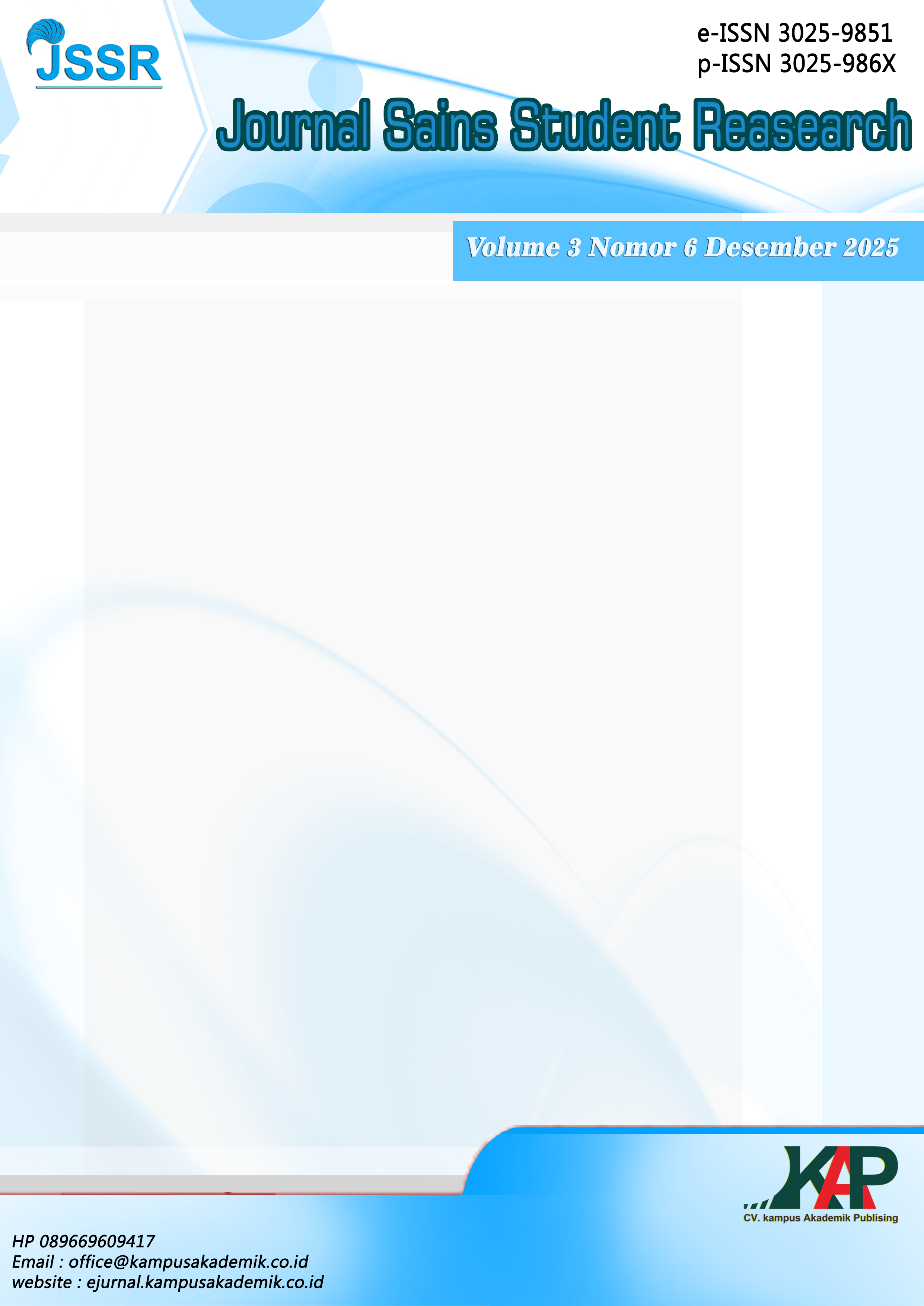INOVASI ISI GYOZA DENGAN PROPORSI AYAM DAN IKAN PATIN DENGAN PENAMBAHAN SEMANGGI: UJI SENSORI DAN KESUKAAN
DOI:
https://doi.org/10.61722/jssr.v3i6.6240Keywords:
Chicken, catfish, clover leaves, gyoza, preference level, sensory testAbstract
This study aims to determine the effect of chicken and catfish proportions, as well as the addition of clover leaves, on the sensory characteristics and preference level of gyoza products. The research method used was an experimental design with a factorial approach, and data were analyzed using ANOVA Two-way and Duncan's post hoc test. The results showed that there was a significant interaction effect between the proportion of chicken and catfish and the addition of clover leaves on the sensory attributes of gyoza, particularly in terms of aroma, taste, and overall preference. The best treatment combination was found at a 50% chicken and 50% catfish ratio with 20% clover leaf addition, which received the highest sensory scores. Individually, the chicken and catfish proportion influenced the balance of taste and aroma, with the 50:50 ratio being more preferred than the 60:40 and 70:30 combinations. The addition of 20% clover leaves had a positive contribution in enhancing the aroma and taste without compromising the texture of the product. Panelists' level of preference indicated that the ingredient combination in treatment proportion ayam 50%, patin 50%, dan semanggi 20% has a strong potential to be well received by consumers.
References
Almatsier, S. (2009). Prinsip Dasar Ilmu Gizi. Gramedia Pustaka Utama.
Aun Consulting Inc. (2022). Survey: 91.7% of Indonesians want to visit Japan. Aun Consulting. https://www.nippon.com/en/ news/yjj2022081900813
Fitri, A. S., & Fitriana, Y. A. N. (2020). Analisis senyawa kimia pada karbohidrat. Sainteks, 17(1), 45–52. https://doi.org/10. 30595/sainteks.v17i1.8536
Harahap, D. R., Arifin, Z., & Mustika, S. (2022). Pengaruh Perbandingan Daging Ayam dan Sayuran terhadap Mutu Sensoris Gyoza. Jurnal Pangan Dan Agroindustri, 10(2), 95–103.
Lawless, H. T., & Heymann, H. (2010). Sensory Evaluation of Food. Springer New York. https://doi.org/10.1007/978-1-4419-6488-5
Prameswari, G. N. (2018). Promosi gizi terhadap sikap gemar makan ikan pada anak usia sekolah. Journal of Health Education, 3(1), 1–6. https://doi.org/10.15294/higeia.v3i3. 30046
Rajebi, O., Sabrina, A. P., Aeni, F. N., Ahda, A., & Gunarti, N. S. (2023). ISOLASI JENIS ASAM LEMAK DARI BERBAGAI BAHAN BAKU : ARTIKEL REVIEW. Jurnal Buana Farma, 3(2), 11–17. https://doi.org/10.36805/jbf.v3i2.581
Sofia, L. A., & Yunita, R. (2021). Perluasan pasar produk olahan ikan patin melalui perbaikan kemasan dan promosi daring. Jurnal Inovasi Hasil Pengabdian Masyarakat (JIPEMAS), 5(1), 58–70. https://doi.org/10.33474/jipemas .v5i1.11860
Sommano, S. R. (2020). Carotenoids and Their Benefits to Human Health. Plants, 9(3), 415. https://doi.org/https://doi.org/10.3390 /plants9030415
Wijaya, H., & Dirpan, A. (2021). Organoleptic product study of gyoza products with natural dyes extracted from purple sweet potatoes. IOP Conference Series: Earth and Environmental Science, 30(101–110). https://doi.org/10. 23960/jtihp.v30i2.101110
Winarno, F. G. (2004). Kimia Pangan dan Gizi. Gramedia Pustaka Utama.
Yuliani, H. (2024). Proporsi Gyoza ayam dan ikan tongkol dengan penambahan bayam merah untuk remaja anemia. Polteknik Kesehatan Kemenkes Bandung.
Zahra, A. A. (2023). Pengaruh Substitusi Tepung Mocaf Terhadap Kualitas Yaki Gyoza.
Downloads
Published
Issue
Section
License
Copyright (c) 2025 JOURNAL SAINS STUDENT RESEARCH

This work is licensed under a Creative Commons Attribution-ShareAlike 4.0 International License.













